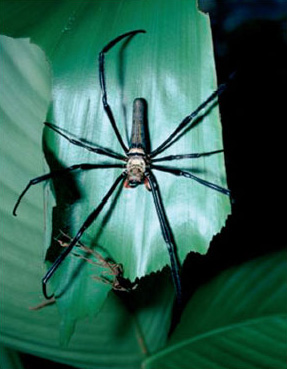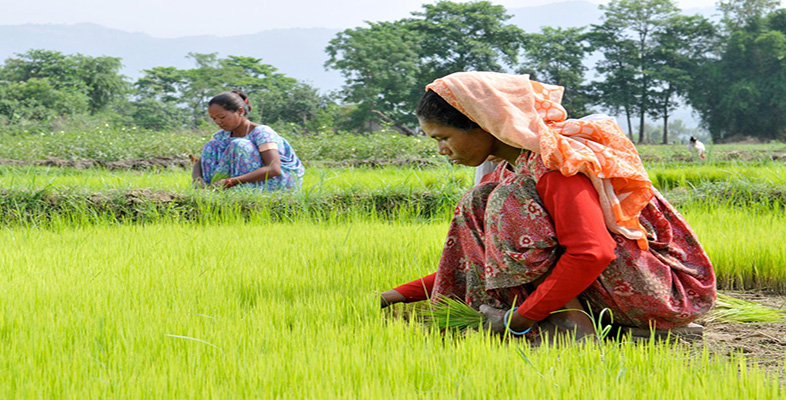3.2 Migrations of life
As biologist and pioneer environmentalist Rachel Carson once wrote: ‘the stocking of the islands has been accomplished by the strangest migration in earth's history – a migration that began long before man appeared on earth and is still continuing’ (Carson, 1953, p. 66). Austronesian voyagers may have been the first people to venture far into open water, but many other species, as Carson suggests, have also found ways of negotiating passages across the ocean. Arriving at pockets of land thousands of kilometres out in the Pacific, the first human voyagers encountered plants, insects, crustaceans, birds and sometimes even reptiles and mammals.
Activity 6
In the same way that Activity 5 asked you to ponder how the people of Tuvalu came to inhabit their islands, now give some thought to how other forms of life may have reached oceanic islands before they were able to hitch lifts on human vessels. It may take a little imagination, and an ability to take low odds and sheer fluke into account, but see if you can come up with some ideas.
This is indeed a challenging problem, and biologists, including Charles Darwin, have spent a great deal of time trying to answer it. Back in the mid nineteenth century, when Darwin was still working on his theory of evolution, biologists, or ‘natural historians’ as they were usually called, often relied on theories of land bridges to explain how different organisms found their way to islands. At this time it was already widely accepted that sea level had varied considerably over long periods of time, so that present-day islands may not always have been encircled by sea. As Darwin wrote in The Origin of Species, ‘authors have thus hypothetically bridged over every ocean, and have united every island to some mainland’ (Darwin, 1996, pp. 288–9, first published 1859). While agreeing that these submerged connections might explain the populating of some islands, particularly those closer to the mainland, Darwin was dubious about their extension to oceanic islands – in part, because he was well aware that many of these islands were volcanic in origin, rather than being detached outcrops of once larger continents.
This left Darwin speculating over, and experimenting with, the ways that various forms of life might have made it across oceans. He proposed that seabirds must have played a major part in the dissemination of plant life by unintentionally dispersing seeds. Following an intuition along this line, Darwin once plucked a ball of mud from the plumage of a seabird, and extracted from it enough seeds to grow 82 separate plants from five different species (Carson, 1953). He performed similar experiments with seeds that had passed through the digestive system of birds, and also gathered evidence that nuts, fruit and other seed-bearing propagules could endure lengthy immersion in sea water and still germinate successfully (Darwin, 1996, pp. 290–3, first published 1859). Later researchers have gone on to identify lightweight seeds equipped with feather- or parachute-like appendages that enable them to ascend high into the sky and to be wind blown across vast distances, as Rachael Carson (1953) recounts.
While sea-going birds and ocean and air currents could explain the dispersal of plant life, many members of the animal kingdom have posed thornier problems. The presence of land-based and frequently flightless birds on oceanic islands – such as the ill-fated dodo of Mauritius – was especially baffling. That is, until Darwin's theory of long-term evolutionary change offered a way of explaining how birds that were once capable of long-distance flight had subsequently adapted physically to a more terrestrial life. While some insects have likewise arrived with their own wing power, others have evolved ways of hitching lifts with seabirds or drifting on air currents, such as the numerous species of spider known to float or ‘balloon’ across the sea on their own silken filaments (see Figure 9) (Winchester, 2004; Carson, 1953).

In the case of many land-based life forms, which could not conceivably have relied on wings, fins or floating ability, it was Darwin's contemporary, Alfred Wallace, who offered evidence from the field of some intriguing modes of maritime voyaging. Among the islands between the Pacific and Indian Oceans, Wallace observed large clumps of drifting vegetation, and speculated that all sorts of organisms – including mammals and reptiles – could raft across hundreds of kilometres of open sea in this way, eventually colonising new islands. However, he also recognised that this was an incredibly chancy affair, especially considering that many species rely on sexual reproduction, and that it would require a pair of organisms to complete the journey (Quammen, 1996, p. 145). Subsequent researchers have lent support to Wallace's speculations. It is now widely acknowledged that not only uprooted trees and matted vegetation but also volcanic rock, such as the eminently buoyant pumice, operate as a ‘sea going transport system’ for the propagation of island life (Barnes, 2002, p. 808).
Defining colonisation
Colonisation refers to the process by which organisms become established in an area where they were not previously found. It is a normal and vital part of the changing distribution of life across the planet. In this sense of the word, there have been many times when human beings, like any other species, have established themselves in areas where there were previously no people. In cases where human colonisation involves the establishment of a new group of people at the expense of people previously inhabiting an area, colonisation takes on other, political meanings, not usually associated with colonisation as a biological process (Barnett, 2006).
Many of the ocean-crossing or island-hopping journeys that have brought new species to islands must have been so rare that their contribution to island life only makes sense if great reaches of geological time are taken into account. Being so discontinuous and fitful, it may be stretching the use of the concept to refer to all such forms of mobility as flows’ What is remarkable about these dispersals of non-human life is their continuity with some of the different modes or means of human migration. Polynesian seafarers, you may recall, found their way to new islands by taking advantage of winds and ocean currents, as well as taking pointers from seabirds and ocean-going life forms. These are much the same physical or elemental forces that other species have relied upon to reach new islands, albeit in a more haphazard fashion. Consequently, we might also refer to the prevailing winds and ocean currents, as well as the more regular movements of living things, as forms of ‘flow’ – flows which can be tapped into by opportunistic travellers, both human and non-human.
Islands have been shaped and woven into territories through a combination of flows of very different kinds. Without the many other organisms that have made it over the ocean, crossed the beach and performed the difficult task of weaving themselves into a workable web of life, new human arrivals could not have made a home of these islands.
Summary
Early seafarers developed the skills to take advantage of flows of wind and sea in order to colonise oceanic islands, as well as creating their own flows between islands.
Other forms of life have also taken advantage of flows of wind and sea in order to cross the sea and colonise oceanic islands.
Every new arrival – whether human or non-human – that crosses the ocean must weave itself into the existing territory if it is to become established on an island.
Human and non-human beings often share similar dynamics in the utilisation of flows to find and shape territories.
